A new art space
In Lviv, on the territory of the Potocki Palace, you can now visit a new art location — the Museum of Modernism, which for the first time, systematizes modernism from its early stages to postmodernism.
The exhibition of Lviv modernism takes place here, not as a part of the culture of Poland or Russia, but as a unique, original phenomenon.
Context: art and progress
In 1913, the atom was invented.
After that, a method of small, scrupulous analysis of life appeared in the worldview of intellectuals. Therefore, cubism, the dismemberment of objects into cubes, organically "keeps pace" with time.
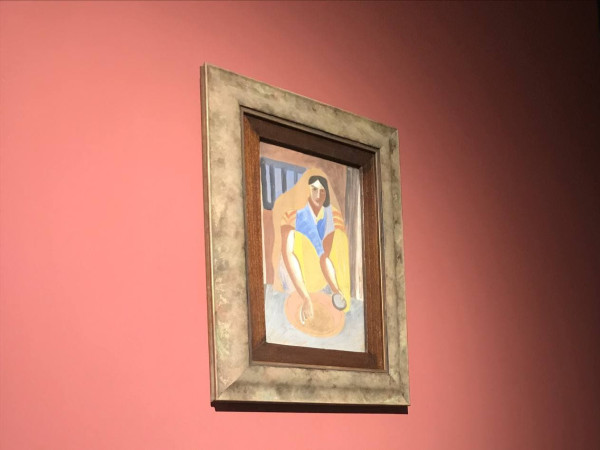
Sviatoslav Hordynskyi, "Arabka"
In the 20s, after the First World War, there was a situational return to the classics, and decadence appeared.
People don't want to watch and broadcast the topic of war and ideologies, so the motifs of classics and recreation appear. The art deco style also appears organically - a mix of avant-garde styles of futurism and neoclassicism.
Hall of late modernism (the art of post-war sensibility)
Late modernism is the art of reaction to the events of the first half of the 20th century. In other words, this is the art of common sense when people start talking about lost values.
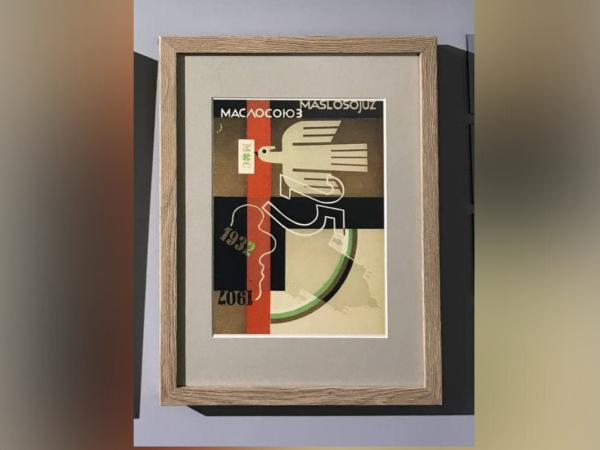
Pavlo Kovzhun, Maslosoiuz advertising design
Businesses began to use avant-garde inventions. Applied graphics, which appear on magazine covers and in advertising, are also actively developing.
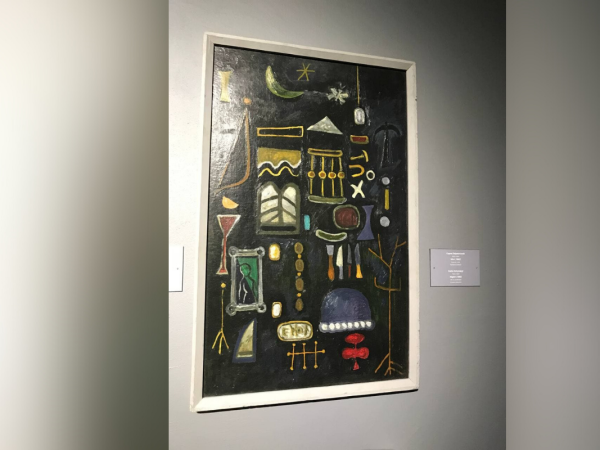
Carlo Zvirynskyi, "Night-I"
For example, Carlo Zvirynskyi, who grew up in the courtyard of the Lavra Monastery, saw how the remains of the building were scattered on the ground, so he collected these remnants of pre-war culture.
His "Night" is a visualization of categories of memory. In European modernism, this is called the "spiritualization of objects." It was inherent to Zvirynskyi: he painted objects touched by his father's hand.
Zvirynskyi, because he was being followed, often scheduled meetings in Snopkiv Park or Briukhovetskyi Forest. He liked to return to the forest and said that it was necessary to look into the thicket more often.
Therefore, the forest theme occurs in many of Zvirynskyi's engravings, and the forest paintings are such that you want to meditate in front of them.
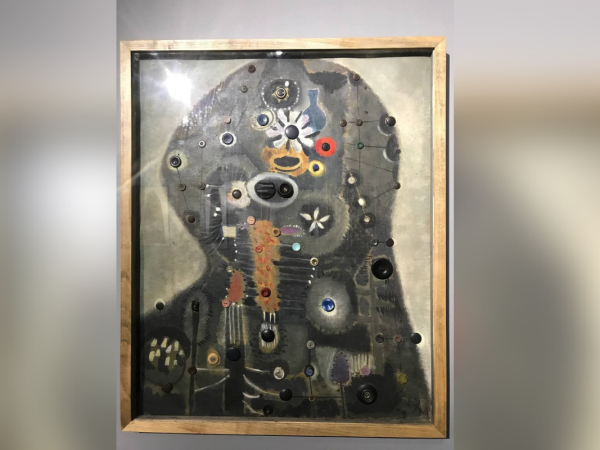
Petro Markovych, "Madonna"
Petro Markovych, at a certain period, belonged to the Pentecostal denomination. When he started agitating the people around him, he was banned from teaching at an art school.
The leadership of the KDB decided to convince him of his wrongdoing and took him to the punishment room in Lviv on Sakharova Street - the "shooting room".
And they showed him a mountain of buttons from the crematorium where political prisoners were burned and said: "Look, God does not exist. Death and buttons are all that remain.”
It made such a strong impression that he collected those buttons in his pocket, from which he later created a painting. And, I suspect that this picture is called "Madonna" for a reason - it is like a prayer to the Mother of God for those who have died.
"I always look at art through a worldview".
Yevhen Lysyk Hall
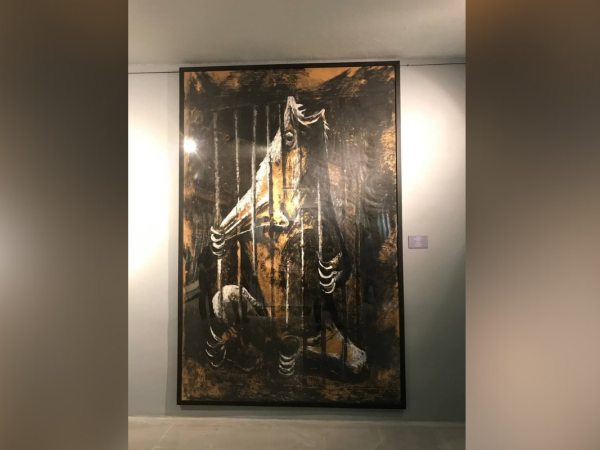
Yevhen Lysyk, "The Bear in the Cage"
This bear in a cage is, in fact, a self-portrait of Fox. The motive of this picture was the situation when in 1967, bears began to be brought to the open-air museum. When he saw this big bear in a small cage, he was very impressed and probably felt the same way.
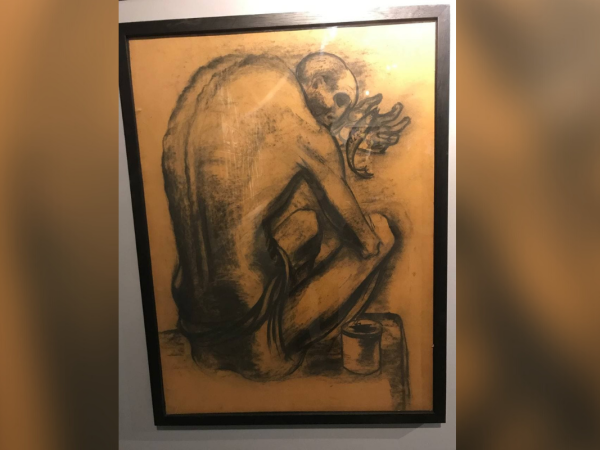
Yevhen Lysyk, "The Blind Fisherman"
"The Blind Fisherman" is also a very existential picture. A man catches a fish, but he is hunched over, squeezed in these picture frames. And this is the image of a person with a "homo sovieticus", who supposedly has something to eat, but the frames do not allow him to straighten up.
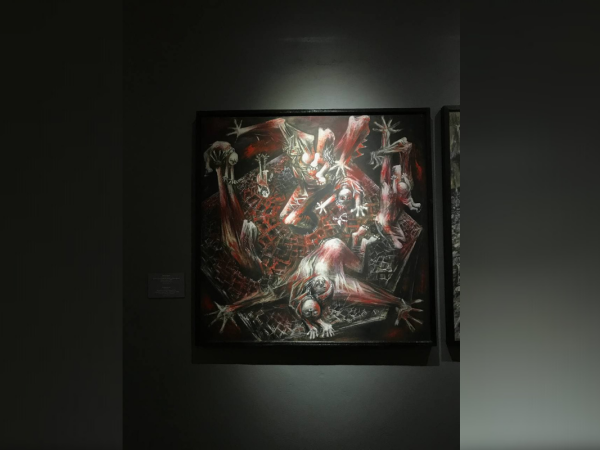
Yevhen Lysyk, Scenography Sketches for Serhii Prokofiev's Opera "War and Peace"
Cosmogonic was developed in the world, but it was special in our country because we had Lysyk. No one else made such existential or cosmological stage sets.
This painting from 1985 depicts the scene of the apocalypse, the end of the Cold War. And this feeling of the apocalypse reached its climax and poured out in this picture.
Hall of intellectual reflection
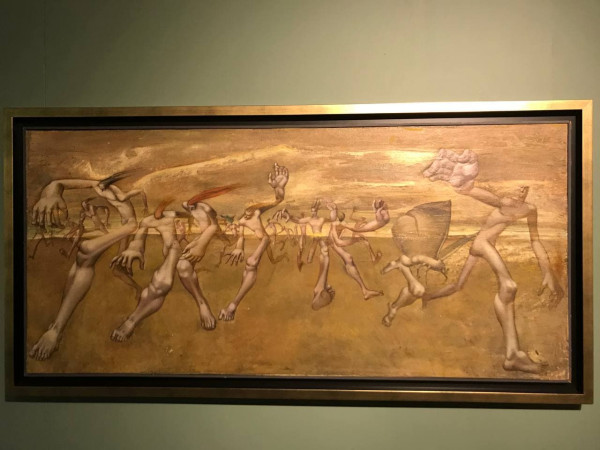
Liubomyr Medvid, "Evacuation. Butterfly flight"
The artists represented in this hall were a specific generation, intellectuals. When we talk about Liubomyr Medvid, the basis is the individual story of his family's resettlement when during the Vistula operation, they were torn from their native home and sent to a village near Lviv.
"Art is interesting, it has its sensitive forms; it is always ahead of history with feelings. Art is always a prophecy".
"Art is interesting, it has its sensitive forms; it is always ahead of history with feelings. Art is always a prophecy".
Hall of neo-avant-garde
The neo-avant-garde was only where it was lost and where it had to be returned. So, this hall is the period of the return of the avant-garde to formal culture.
There is a hidden history of this return - it is the underground school of Karl Zvirynskyi, which existed from 1959 to 1966. And there is an official story of the return of the avant-garde through the "Special Composition" technique of the Lviv Institute of Applied Arts.
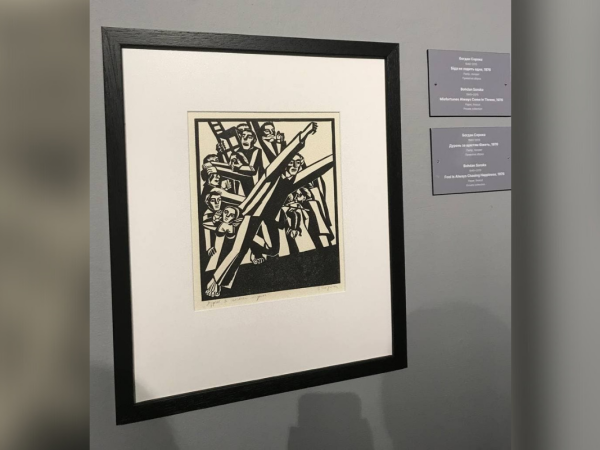
Bohdan Soroka, "A fool runs after happiness"
In the series "Our people" by Bohdan Soroka - "A fool runs after happiness" is such a mockery of the distorted worldview of the Soviet people, an irony of the "homo sovieticus".
Hall of postmodernism
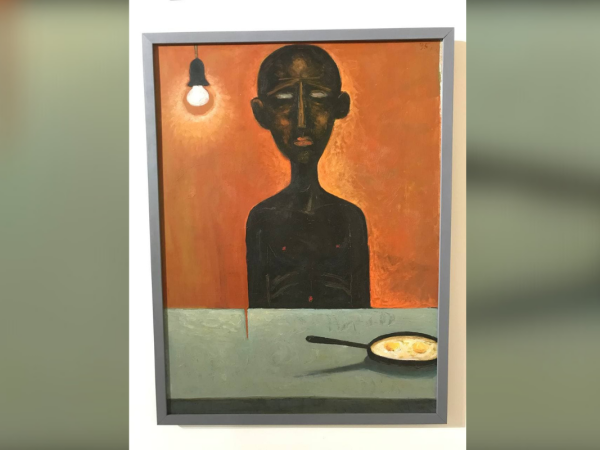
Petro Humeniuk, "Gayby of Sorrows"
Here we are talking about the end of the 80s and the beginning of the 90s. It was the moment of the collapse of the Soviet Union, the moral crisis, and this was the time when many people committed suicide.
For many people, faith was a timely salary and the opportunity to go on vacation, and when all this was gone, people's consciousness began to collapse.
Moral outsiders appear, that is, people who do not perceive reality, do not communicate with anyone, and close in on themselves. This is what Petro Humeniuk became.



